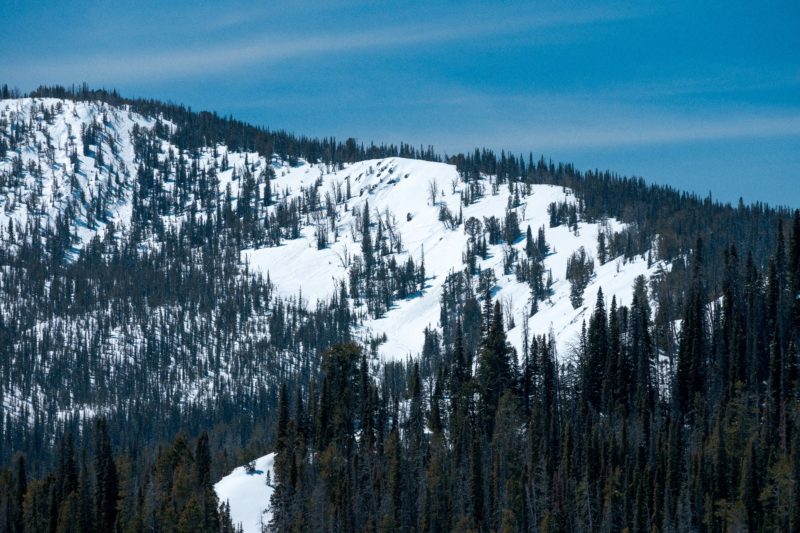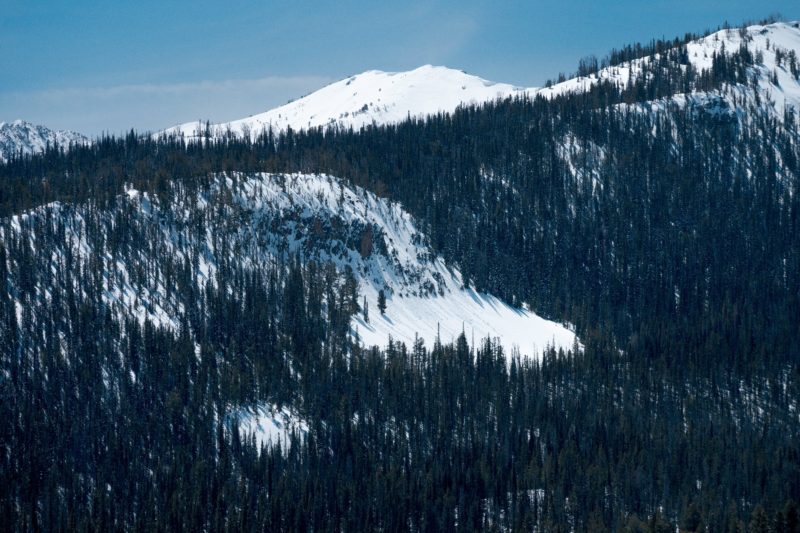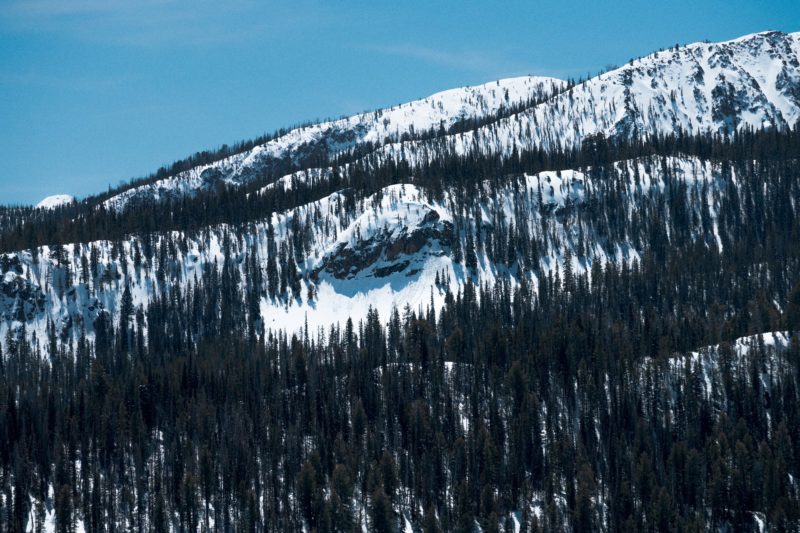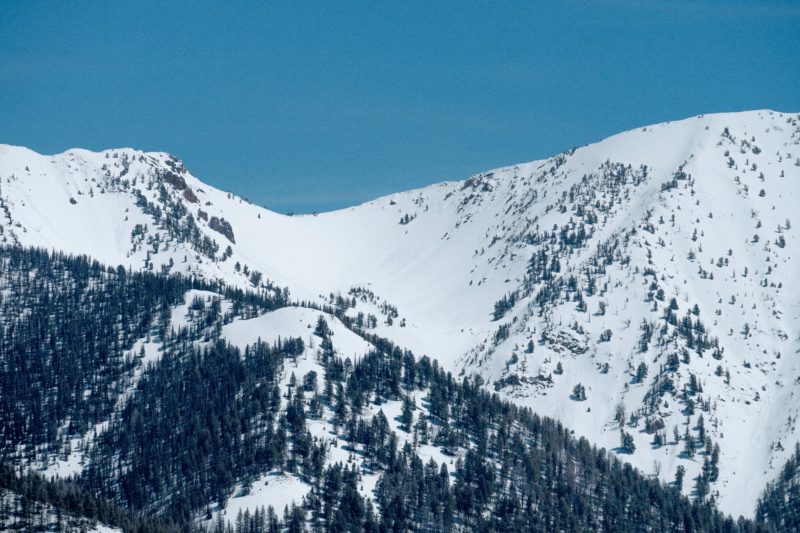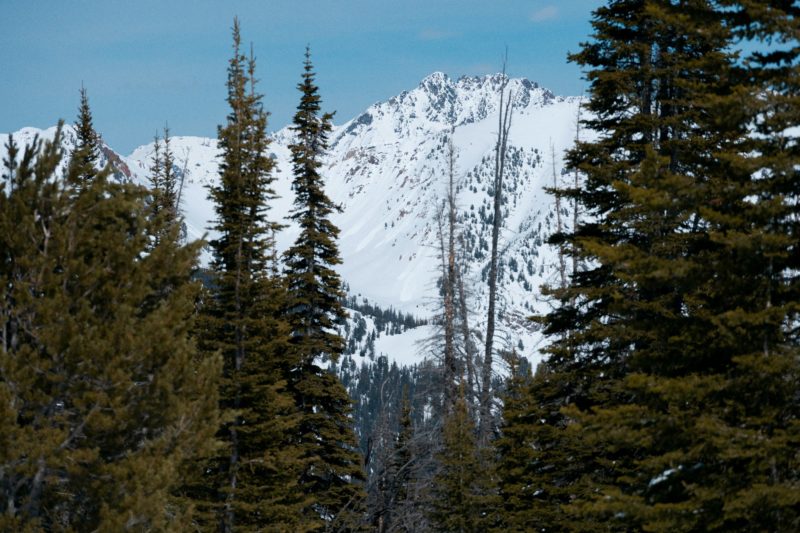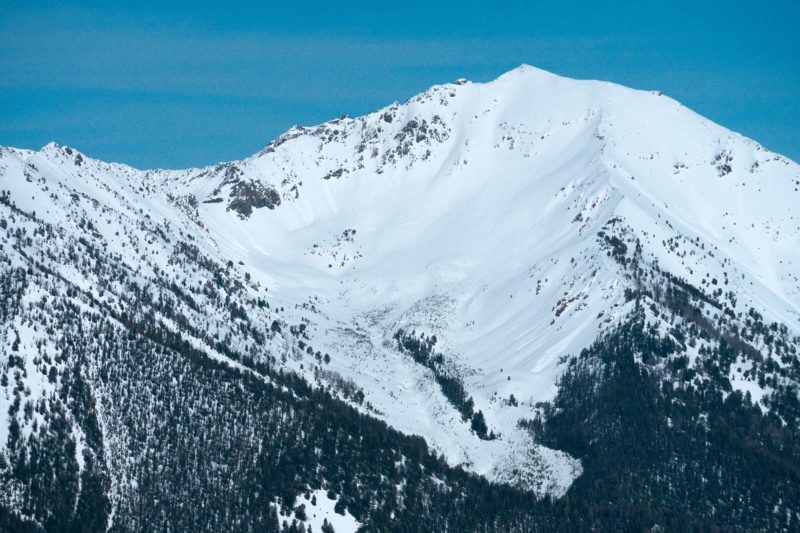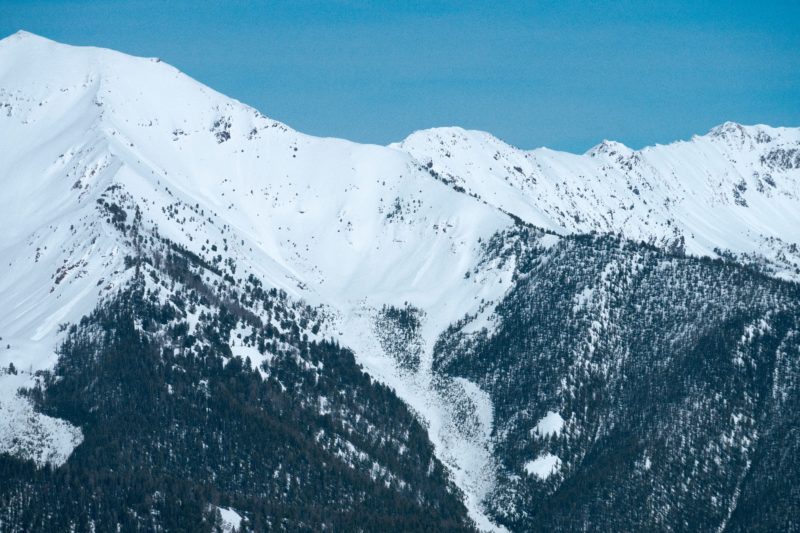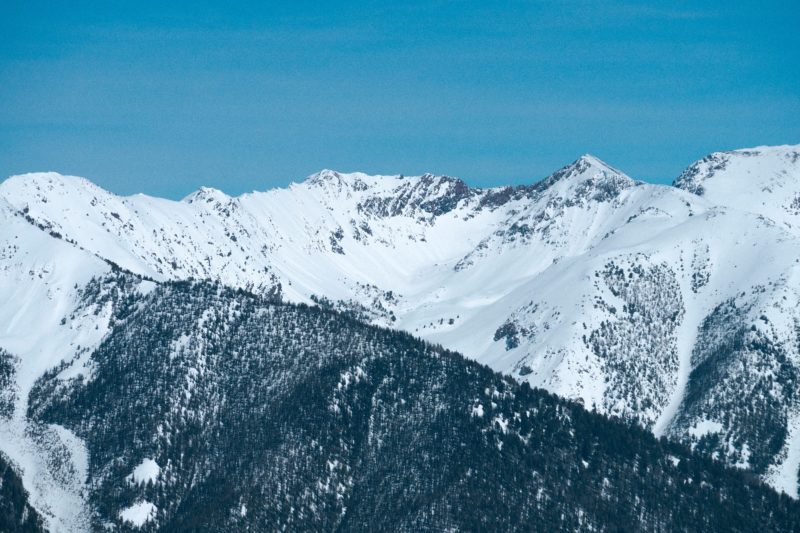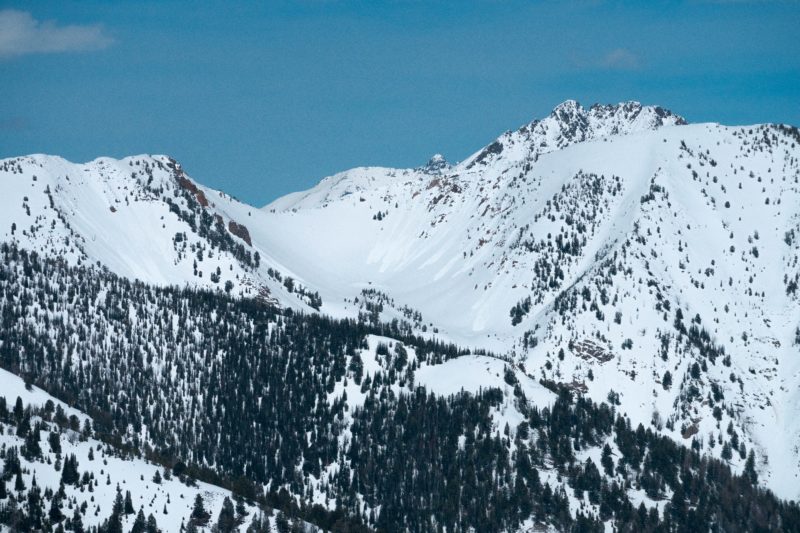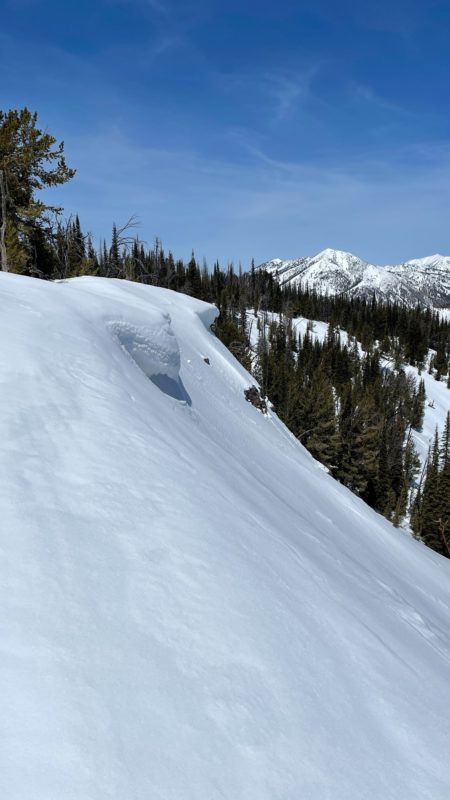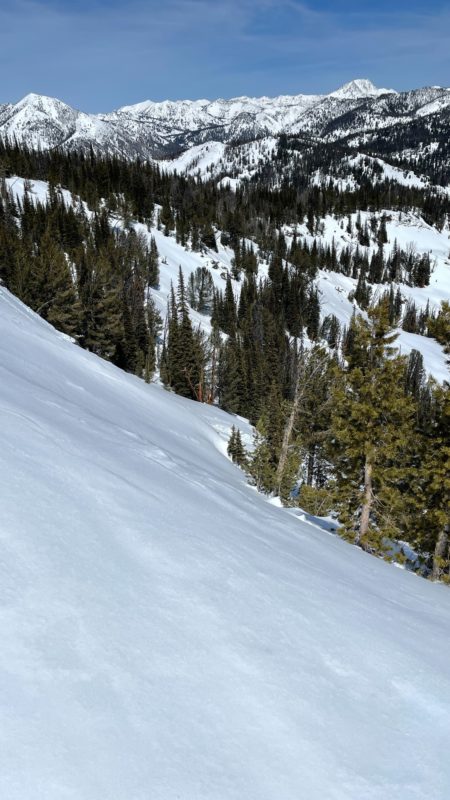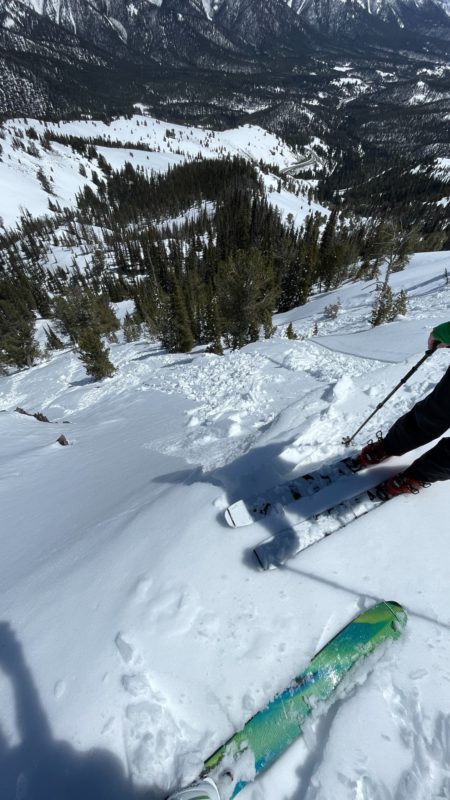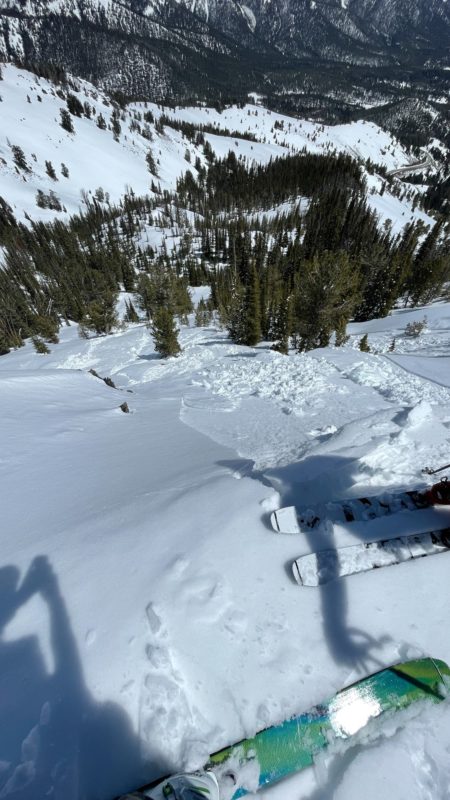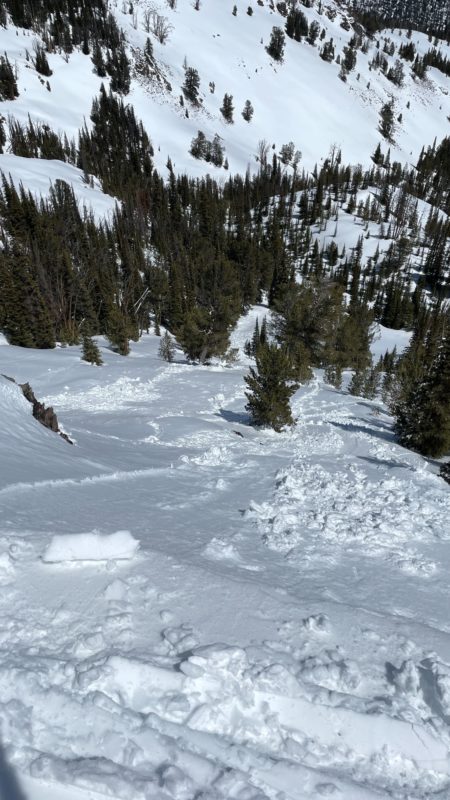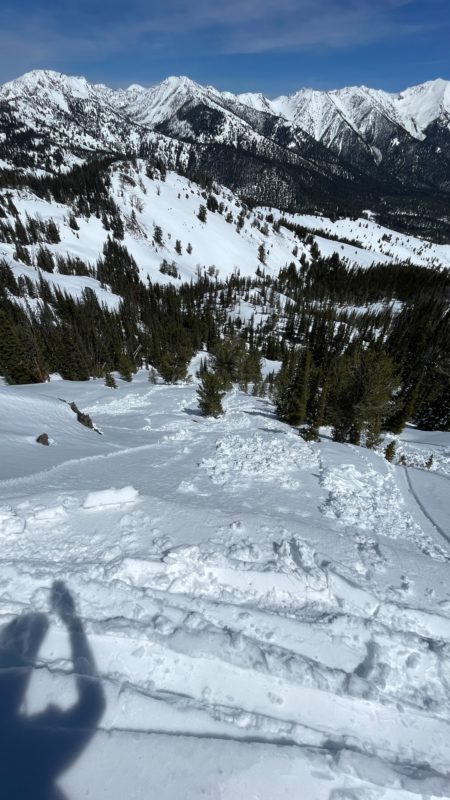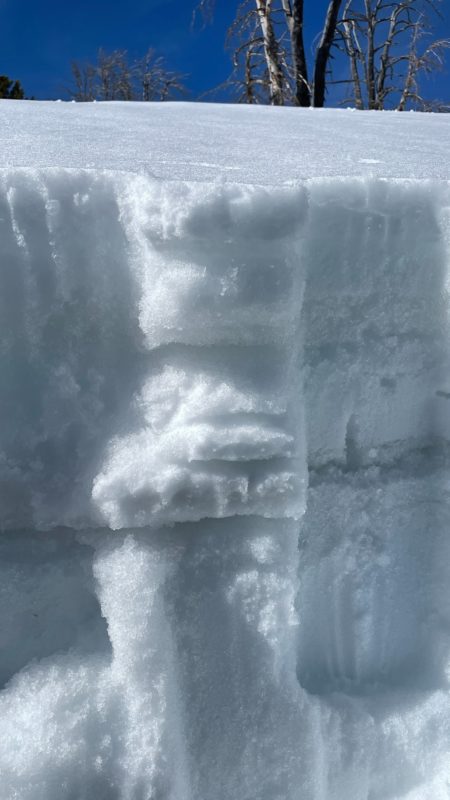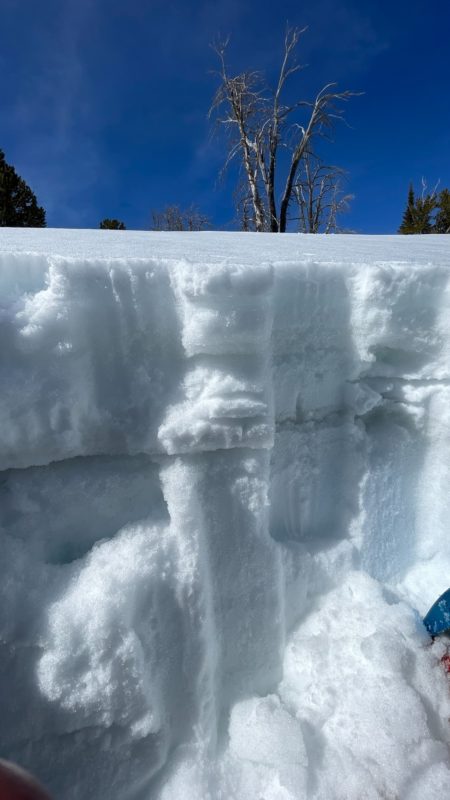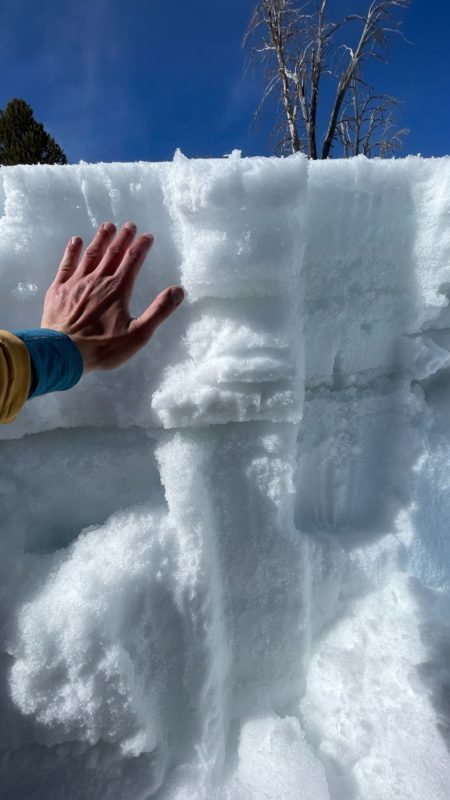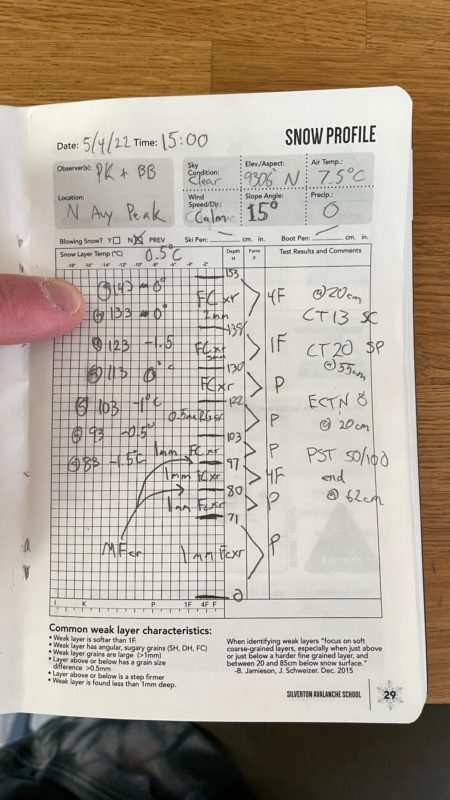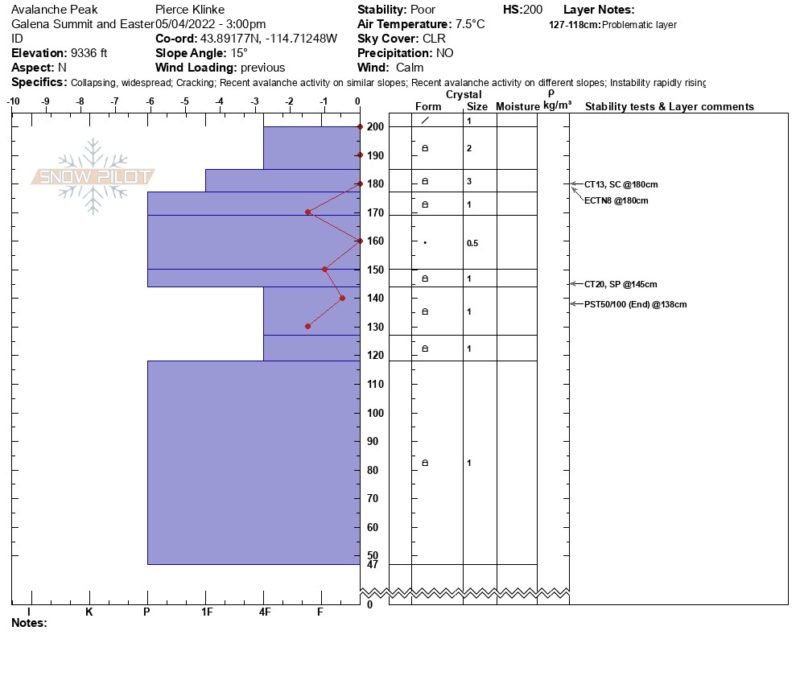Observation Details
Observation Date:
May 4, 2022Submitted:
May 5, 2022Zone or Region:
Galena Summit and Eastern MtnsActivity:
Skiing/SnowboardingLocation:
Avalanche PeakTriggered Avalanches
Did you trigger any avalanches?
YesWas it intentional?
YesAvalanche Type:
Wet LooseSize:
Size 1: Relatively harmless to peopleElevation:
MiddleAspect:
SComments:
The top 10-20cm of the snowpack was reactive on slopes above 30 degrees. Trigger with the weight of a human or less was possible and resulted in propagation of the slide. I put S for aspect but we observed this problem on all aspects. We kicked off several small slides via ski cut and intentionally collapsing cornices we found on the E aspect of the summit of Avalanche Peak.Observed Avalanches
Did you observe any avalanches?
YesAvalanche Type:
Wet LooseSize:
Size 2: Could bury, injure, or kill a personElevation:
UpperAspect:
WComments:
Observed 15-20 wet loose slides triggered in the upper elevations of the Boulders, viewed from the Galena Summit area. Slides continued to happen throughout the day until around 4pm, at which point we didn't seem to observe any new slide activity.Signs of Unstable Snow
Did you see shooting cracks?
Yes, IsolatedDid you experience collapsing or whumpfing?
Yes, WidespreadObservations
Observed isolated cracking as we toured, failing on the most recent MFcr found at 10-20cm depending on aspect. Widespread whumpfing occurred as traveled throughout the day and on all aspects. Snow pit tests were CT13 SC @20cm, CT20 SP @55cm, ECTN 8 @20cm and PST end 50/100 @62cm, taken from a pit on 15 degree north facing slope at 9306' near Galena Summit. The deeper but harder to trigger weak layer of MFcr around 55-62cm is pretty spooky, a good portion of the slab sitting above it is pencil hardness and quite compacted. May stubborn to trigger however the consequences of trigger this weak layer would be severe. We dug a quick pit on the southern aspect of Avalanche Peak at 9200' and were able to observe the same signs of instability as seen on the northern aspect however the depth of the weak layer (MFcr) is shallower.
Media
